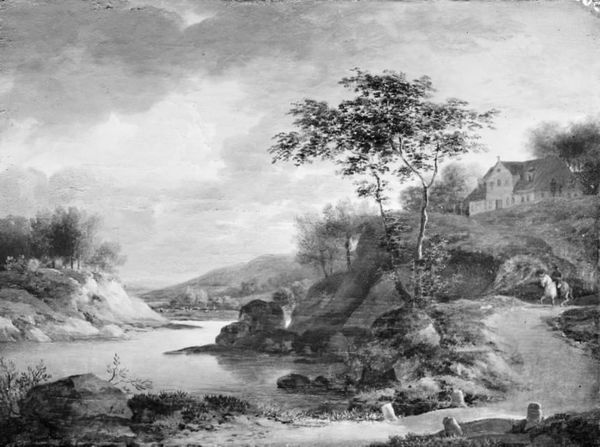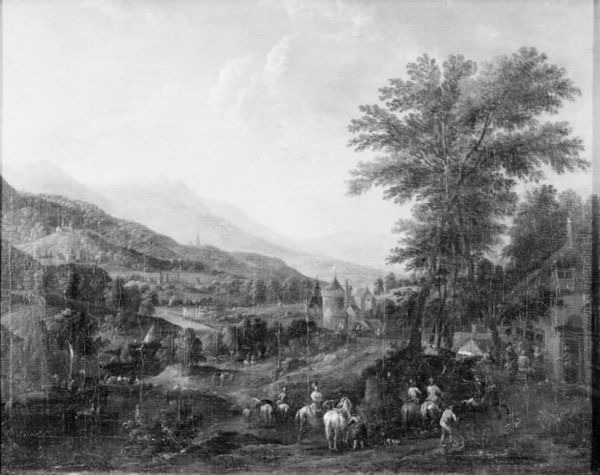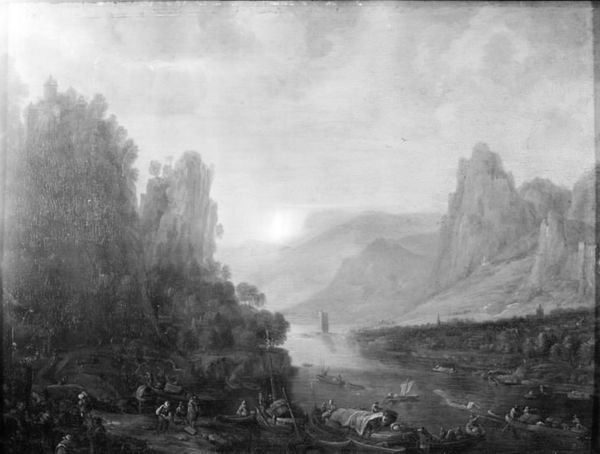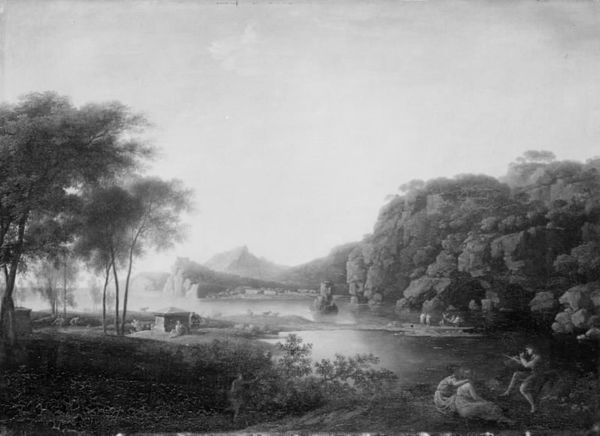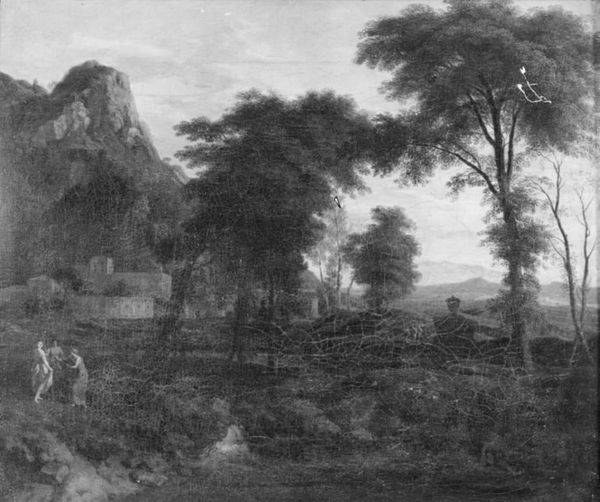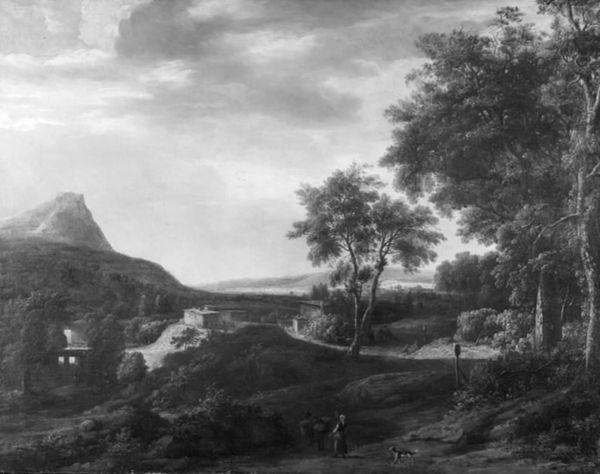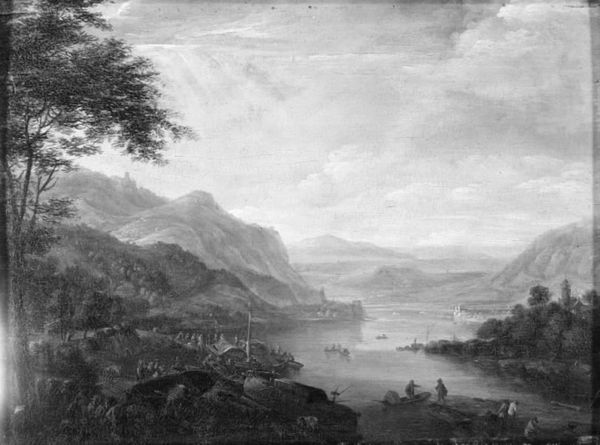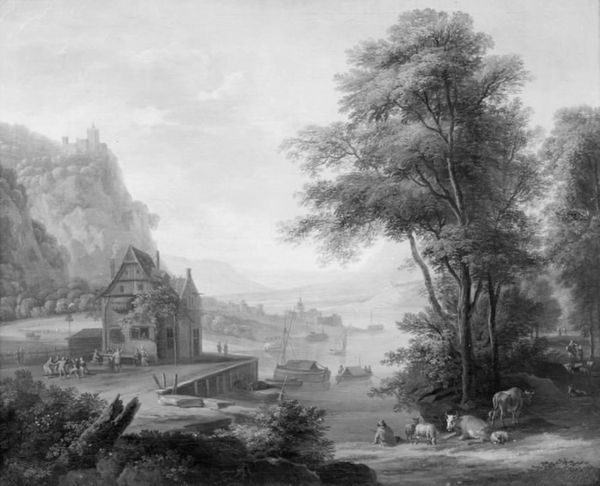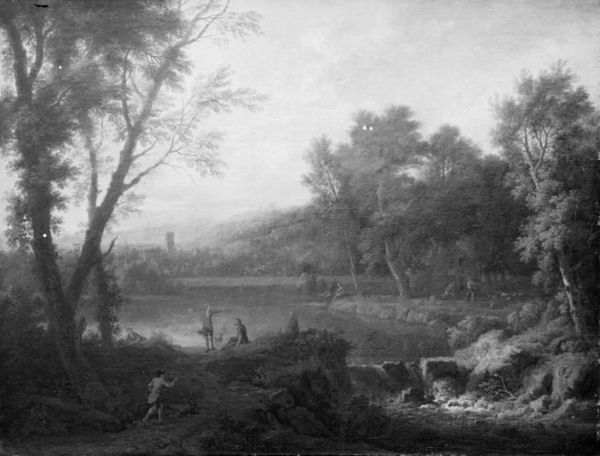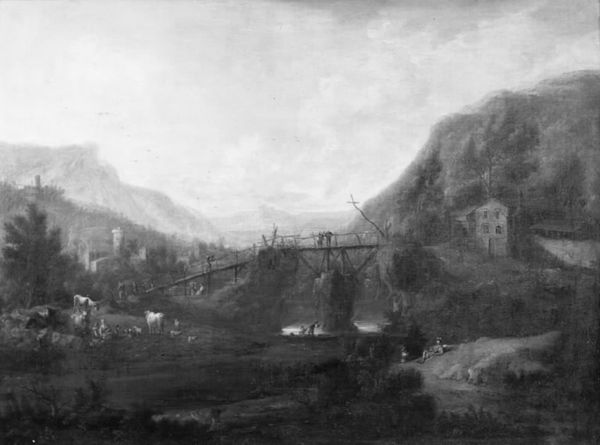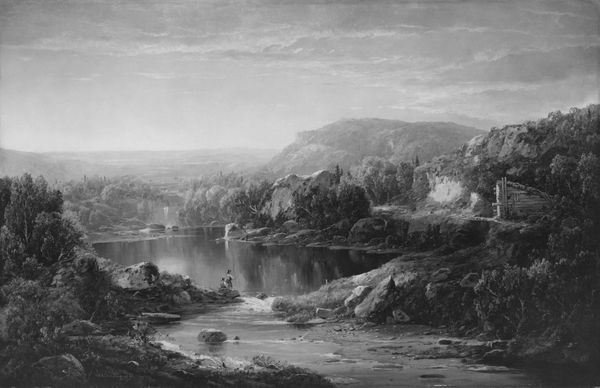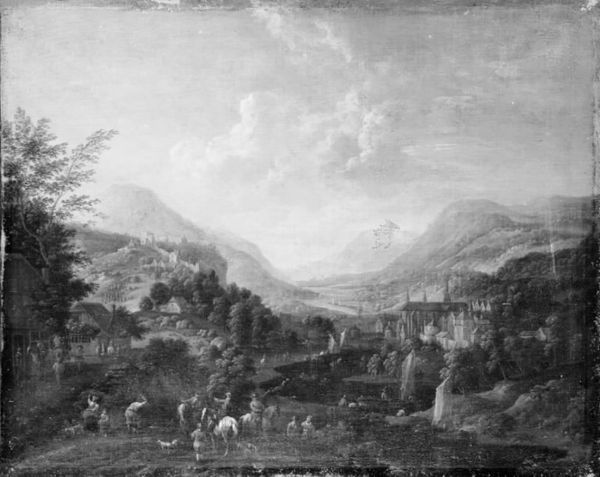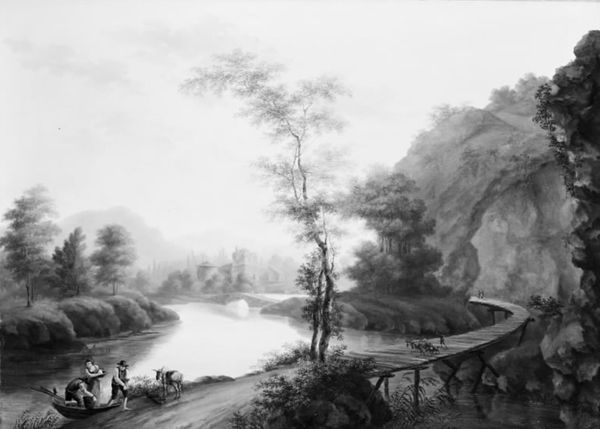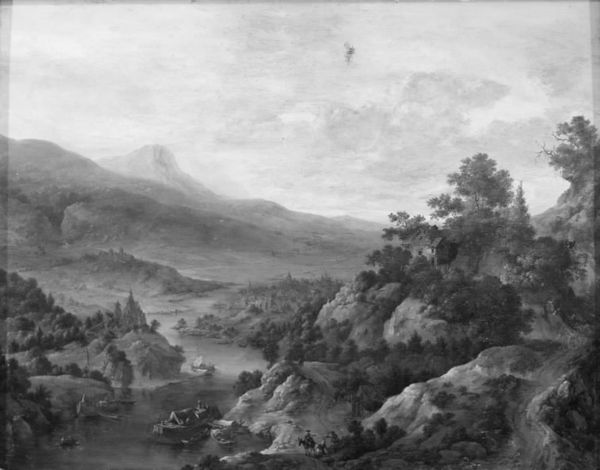
painting, oil-paint, canvas
#
painting
#
oil-paint
#
landscape
#
canvas
#
black and white
#
monochrome
#
monochrome
Dimensions: 140.5 cm (height) x 182.5 cm (width) (Netto)
Curator: Herman van Swanevelt painted "Quiet Summer Evening by a Mountain Lake" sometime between 1615 and 1655. The medium is oil on canvas. Editor: This reminds me of those black and white movies, you know? The ones that seem to glow from within. It’s so calming, despite the limited palette. There’s this sort of hushed serenity that makes me want to curl up by that lake. Curator: The monochromatic rendering directs the viewer’s eye to the formal aspects—the chiaroscuro, creating dramatic contrast and depth, and the carefully orchestrated composition where light guides our gaze. Notice how the central tree functions almost as a structural pillar. Editor: That tree! It's like the wise old observer, watching the scene unfold. All these figures are scattered about. It almost has the feel of an enchanted clearing where woodland nymphs frolic unburdened by anything too heavy. I get a primal sort of feel here, something untouched by modernity. Curator: Precisely. Van Swanevelt employs a pictorial structure derived from classical pastoral traditions. Observe the strategic arrangement of figures within the landscape—each placed to amplify spatial dynamics. Editor: It does feel staged, like a theater set or classical tableau. I'm wondering about the absence of color though. Is it purely aesthetic, or does the monochrome somehow deepen the sense of timelessness or perhaps underscore an essential truth about the landscape? Maybe color would distract. Curator: The elimination of chromatic variance prompts a heightened awareness of tonal modulations. These grayscale graduations serve not merely as representational tools, but become the very substance through which affect is articulated and space is sculpted. Editor: Hmm. Well said. I think there's a lot to unpack in a painting like this. It offers up something fresh, like looking at something deeply familiar with entirely new eyes, doesn't it? Curator: Indeed, it invites a re-evaluation of landscape's potential as a site not only of aesthetic experience but also of sustained semiotic inquiry.
Comments
No comments
Be the first to comment and join the conversation on the ultimate creative platform.
